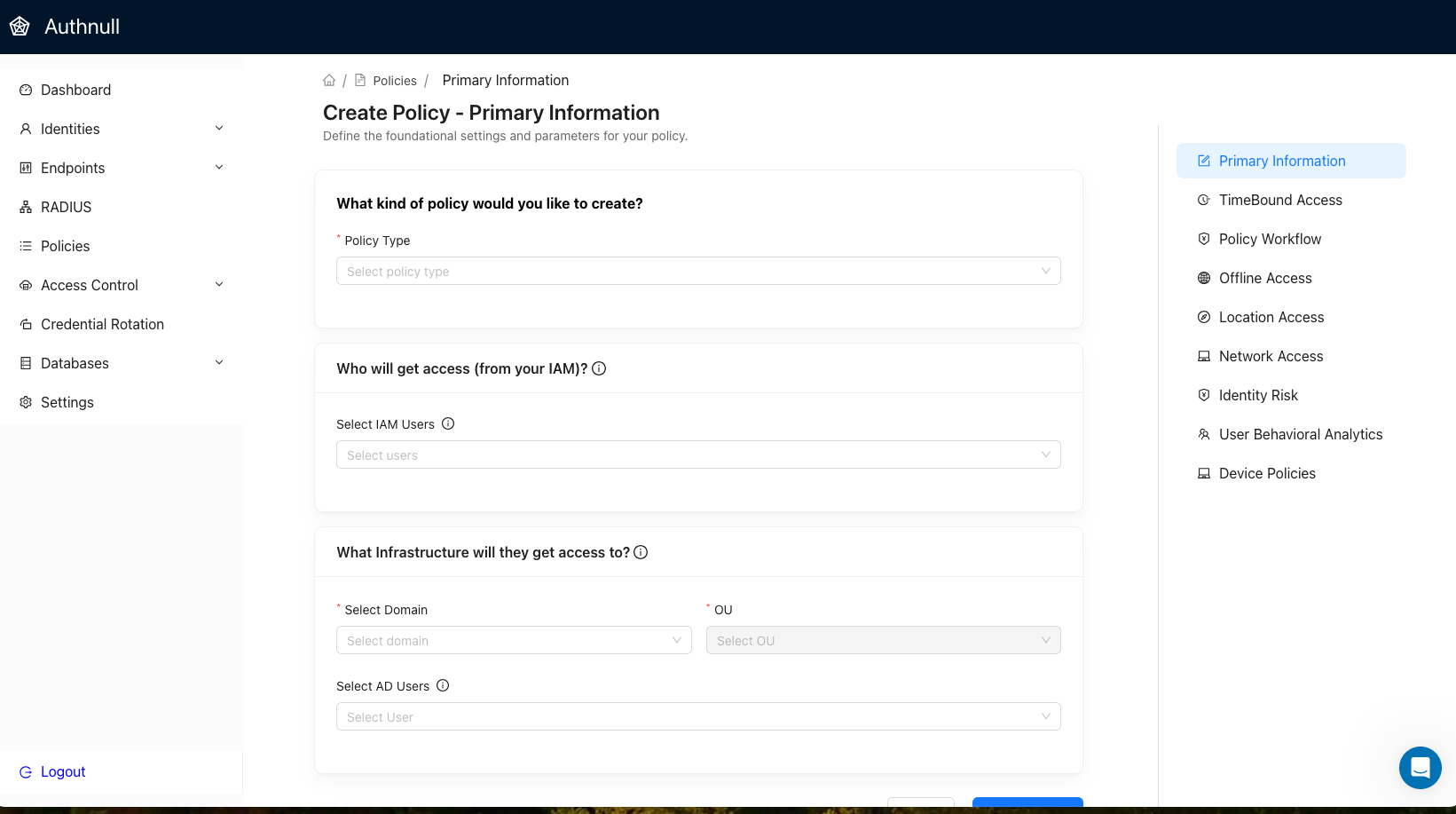Revolutionizing Database Security: How AuthNull Solves Critical Access Management Challenges

In today’s data-driven landscape, organizations face mounting pressure to secure their most valuable asset: their databases. With cyber threats evolving rapidly and compliance requirements becoming more stringent, traditional database security approaches are falling short. Enter AuthNull—a revolutionary solution that transforms how organizations manage database access while maintaining operational efficiency.
The Critical Challenges Facing Database Security Today
1. Fragmented Authentication Systems
Most organizations rely on disparate authentication mechanisms across different database systems. This creates a complex web of credentials that becomes increasingly difficult to manage as your database infrastructure grows. IT teams often struggle with:
- Multiple authentication systems for different database types
- Inconsistent security policies across platforms
- Complex credential rotation and management processes
2. Overly Broad Permissions
Traditional database security models often grant excessive privileges to users and applications, violating the principle of least privilege. This leads to:
- Users having access to data they don’t need for their role
- Applications with database-wide permissions instead of granular access
- Difficulty in implementing fine-grained access controls
3. Limited Visibility and Auditability
Organizations struggle with comprehensive oversight of database access patterns, making it challenging to:
- Track who accessed what data and when
- Meet compliance requirements (GDPR, HIPAA, PCI-DSS)
- Detect unusual access patterns or potential security breaches
- Generate comprehensive audit trails for regulatory reviews
4. Static Security Models
Traditional approaches lack the flexibility to adapt access rights based on real-time context such as:
- User location and device posture
- Time-based access requirements
- Risk-based authentication needs
- Dynamic business requirements
5. Credential Sprawl and Management Overhead
Managing native database credentials across multiple systems creates:
- Security risks from stored passwords and connection strings
- Administrative overhead in credential rotation
- Increased attack surface for credential theft
- Compliance challenges with password management policies
AuthNull: The Game-Changing Solution
AuthNull addresses these critical challenges through a comprehensive Database Security solution that centralizes, simplifies, and strengthens database access management. Our approach transforms database security from a complex, fragmented process into a streamlined, policy-driven system.
Centralized Policy-Driven Architecture
AuthNull externalizes access control from individual databases, creating a unified platform where administrators can define and manage all database access policies from a single interface, regardless of backend database types. This centralized approach ensures consistency and reduces complexity.
Zero-Trust Security Model
By implementing a “deny by default” approach, AuthNull ensures that access is explicitly granted through carefully crafted policies rather than relying on potentially overly permissive default configurations.
Dynamic Access Control
Our solution adapts access rights based on contextual factors including user location, time of day, device posture, and risk assessment, providing intelligent security that responds to real-world conditions.
Comprehensive Data Protection
AuthNull includes advanced features like dynamic data masking, protecting sensitive information by masking specific fields in query results based on user roles without altering the underlying database data.
How AuthNull Works: The Technical Architecture
AuthNull’s architecture comprises several integrated components that work seamlessly together:
Core Components
1. AuthNull Cloud Platform (Control Plane)
- Web-based management interface for policy definition and monitoring
- Central repository for user management and access policies
- Real-time policy distribution to agents
- Comprehensive audit logging and reporting
2. AuthNull Database Agent
- Lightweight software installed on Linux hosts within your environment
- Communicates securely with the Cloud Platform to fetch latest policies
- Works in conjunction with ProxySQL for policy enforcement
- Handles authentication and authorization decisions
3. Integrated ProxySQL Layer
- High-performance SQL proxy that intercepts all database connections
- Enforces access policies in real-time
- Handles connection pooling and query routing
- Executes data masking and other security functions
4. Mobile-First Authentication
- AuthNull mobile wallet for secure connection approval
- Pull Request (PR) system for connection authorization
- Time-limited connection strings for enhanced security
- Biometric and multi-factor authentication support
The Connection Flow
Here’s how a typical database connection works with AuthNull:
1. User Request → 2. AuthNull Agent → 3. Policy Check → 4. Mobile Approval → 5. ProxySQL → 6. Database Access
Step-by-Step Process:
- User Initiates Connection: Application or user attempts database connection
- Policy Evaluation: AuthNull Agent checks configured access policies
- Mobile Authentication: User receives Presentation Request (PR) notification on mobile wallet
- Approval Process: User reviews and approves access request via mobile app
- Proxy Enforcement: ProxySQL enforces policies and routes approved connections
- Secure Access: User gains access to authorized data with appropriate masking applied
- Audit Logging: All activities are logged for compliance and monitoring
Policy-Based Access Control
AuthNull uses granular policies that specify:
- Who: IAM users or groups (authenticated identities)
- What: Specific databases, tables, and operations
- When: Time-based access windows and conditions
- Where: Location and network-based restrictions
- How: Privilege levels (READ, WRITE, EXECUTE) and data masking rules
Cost Savings and Business Benefits
Quantifiable Cost Reductions
1. Reduced Administrative Overhead
- Up to 70% reduction in database access management time
- Elimination of manual credential rotation processes
- Centralized policy management reduces complexity
- Automated compliance reporting saves hundreds of hours annually
2. Compliance Cost Savings
- Streamlined audit processes reduce compliance preparation time by 60%
- Automated logging and reporting capabilities
- Built-in policy templates for regulatory requirements
- Reduced risk of non-compliance penalties
3. Security Incident Prevention
- Prevention of data breaches through granular access controls
- Early detection of unusual access patterns
- Reduced insider threat risks through least privilege enforcement
- Mobile-first authentication prevents credential theft
Strategic Business Benefits
Enhanced Security Posture
- Centralized access management across all database types
- Real-time policy enforcement and updates
- Comprehensive audit trails for all database activities
- Dynamic data masking protects sensitive information
Operational Efficiency
- Single pane of glass for database access management
- Simplified user onboarding and offboarding processes
- Automated policy distribution and enforcement
- Mobile-first approach improves user experience
Scalability and Flexibility
- Support for multiple database types and platforms
- Cloud-native architecture scales with your organization
- Policy-based approach adapts to changing business needs
- Integration with existing IAM and security tools
Regulatory Compliance
- Built-in support for GDPR, HIPAA, PCI-DSS requirements
- Comprehensive audit logging and reporting
- Policy-driven approach ensures consistent compliance
- Automated evidence collection for audits
Return on Investment (ROI)
Organizations typically see:
- ROI within 6-12 months through reduced administrative costs
- 50-80% reduction in database security management complexity
- Significant decrease in compliance preparation time and costs
- Enhanced security posture preventing costly data breaches
Getting Started with AuthNull
Implementing AuthNull is designed to be straightforward:
- Assessment: Evaluate your current database security posture
- Planning: Design your policy framework and access requirements
- Installation: Deploy AuthNull agents on Linux hosts
- Configuration: Set up policies through the intuitive web interface
- Testing: Validate access controls in a controlled environment
- Rollout: Gradually implement across your database infrastructure
- Monitoring: Leverage built-in analytics and reporting capabilities
Transform Your Database Security Today
AuthNull represents a paradigm shift in database security—from complex, fragmented systems to a unified, intelligent, and user-friendly platform. By addressing the core challenges of traditional database security while providing measurable cost savings and operational benefits, AuthNull enables organizations to protect their most valuable data assets without sacrificing productivity or user experience.
The future of database security is policy-driven, centralized, and intelligent. With AuthNull, that future is available today.
Ready to revolutionize your database security? Contact our team to schedule a demonstration and see how AuthNull can transform your organization’s approach to database access management.
AuthNull: Securing databases, simplifying access, and protecting what matters most.





